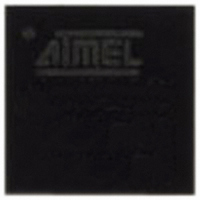AT86RF231-ZU Atmel, AT86RF231-ZU Datasheet - Page 100

AT86RF231-ZU
Manufacturer Part Number
AT86RF231-ZU
Description
IC TXRX ZIGBE/802.15.4/ISM 32QFN
Manufacturer
Atmel
Datasheet
1.AT86RF231-ZUR.pdf
(198 pages)
Specifications of AT86RF231-ZU
Frequency
2.4GHz
Data Rate - Maximum
2Mbps
Modulation Or Protocol
802.15.4 Zigbee, 6LoWPAN, RF4CE, SP100, WirelessHART™, ISM
Applications
Industrial Monitoring and Control, Wireless Alarm and Security Systems
Power - Output
-17dBm ~ 3dBm
Sensitivity
-101dBm
Voltage - Supply
1.8 V ~ 3.6 V
Current - Receiving
12.3mA
Current - Transmitting
14mA
Data Interface
PCB, Surface Mount
Antenna Connector
PCB, Surface Mount
Operating Temperature
-40°C ~ 85°C
Package / Case
32-VQFN Exposed Pad, 32-HVQFN, 32-SQFN, 32-DHVQFN
Number Of Receivers
1
Number Of Transmitters
1
Wireless Frequency
2405 MHz to 2480 MHz
Interface Type
SPI
Noise Figure
6 dB
Output Power
20 dB
Operating Supply Voltage
2.5 V, 3.3 V
Maximum Operating Temperature
+ 85 C
Mounting Style
SMD/SMT
Maximum Supply Current
12.3 mA
Minimum Operating Temperature
- 40 C
Modulation
OQPSK
Protocol Supported
802.15.4
Transmitting Current
11.6mA
Data Rate
2Mbps
Frequency Range
2.405GHz To 2.48GHz
Modulation Type
O-QPSK
Sensitivity Dbm
-101dBm
Rf Ic Case Style
QFN
No. Of Pins
32
Rohs Compliant
Yes
Lead Free Status / RoHS Status
Lead free / RoHS Compliant
Memory Size
-
Lead Free Status / Rohs Status
Lead free / RoHS Compliant
Available stocks
Company
Part Number
Manufacturer
Quantity
Price
Part Number:
AT86RF231-ZU
Manufacturer:
ATMEL/爱特梅尔
Quantity:
20 000
8.6.2
8.6.3
8111C–MCU Wireless–09/09
Request an LQI Measurement
Data Interpretation
tain LQI value. Since the packet error rate is a statistical value, the PER shown in
“Conditional Packet Error Rate versus LQI” on page 99
tions. A reliable estimation of the packet error rate cannot be based on a single or a small
number of LQI values.
The LQI byte can be obtained after a frame has been received by the radio transceiver. One
additional byte is automatically attached to the received frame containing the LQI value. This
information can also be read via Frame Buffer read access, see
Access Mode” on page
According to IEEE 802.15.4 a low LQI value is associated with low signal strength and/or high
signal distortions. Signal distortions are mainly caused by interference signals and/or multipath
propagation. High LQI values indicate a sufficient high signal power and low signal distortions.
Note, the received signal power as indicated by received signal strength indication (RSSI) value
or energy detection (ED) value of the AT86RF231 do not characterize the signal quality and the
ability to decode a signal.
As an example, a received signal with an input power of about 6 dB above the receiver sensitiv-
ity likely results in a LQI value close to 255 for radio channels with very low signal distortions.
For higher signal power the LQI value becomes independent of the actual signal strength. This
is because the packet error rate for these scenarios tends towards zero and further increased
signal strength, i.e. increasing the transmission power does not decrease the error rate any fur-
ther. In this case RSSI or ED can be used to evaluate the signal strength and the link margin.
ZigBee networks often require the identification of the "best" routing between two nodes. Both,
the LQI and the RSSI/ED can be used for this, dependent on the optimization criteria. If a low
packet error rate (corresponding to high throughput) is the optimization criteria then the LQI
value should be taken into consideration. If a low transmission power or the link margin is the
optimization criteria then the RSSI/ED value is also helpful.
Combinations of LQI, RSSI and ED are possible for routing decisions. As a rule of thumb RSSI
and ED values are useful to differentiate between links with high LQI values. Transmission links
with low LQI values should be discarded for routing decisions even if the RSSI/ED values are
high. This is because RSSI/ED does not say anything about the possibility to decode a signal. It
is only an information about the received signal strength whereas the source can be an
interferer.
20. The LQI byte can be read after IRQ_3 (TRX_END) interrupt.
is based on a huge number of transac-
Section 6.2.2 “Frame Buffer
AT86RF231
Section 8-6
100













